In the vast and intricate tapestry of Norse mythology, Odin stands out not just as a supreme Norse god but as a figure of many names, each revealing unique facets of his divine persona.
Known variably as Allfather, Grimnir, and many others, these names encapsulate his multifarious roles—from wisdom and war to magic and mischief.
Exploring the meanings behind Odin’s names offers us a deeper understanding of how the ancient Norse viewed this pivotal deity and his importance within their cultural cosmology.
This exploration serves as a bridge, connecting us to the archaic spiritual landscape of Scandinavia, where every name given to Odin held echoes of power, purpose, and profound respect.
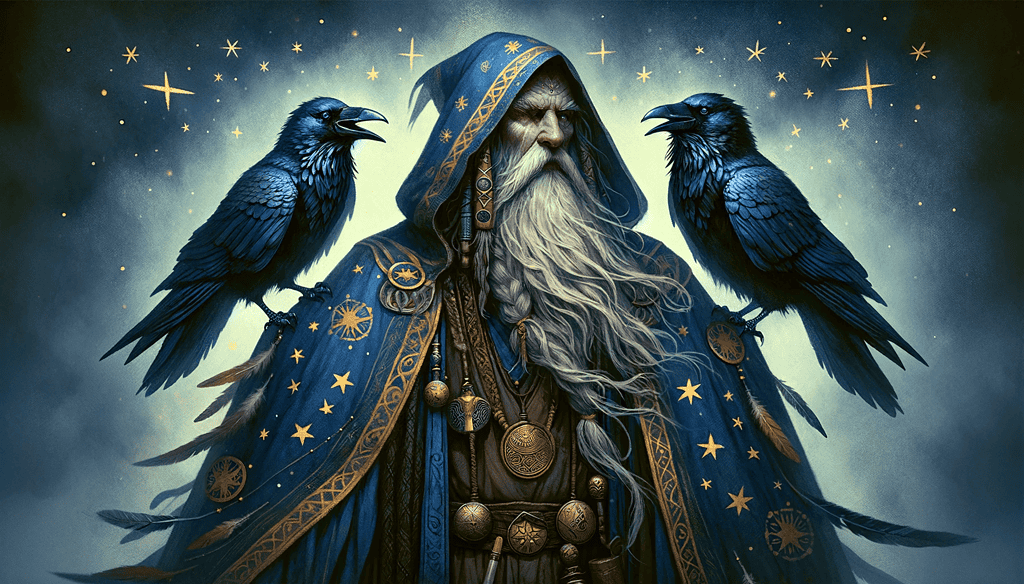
Table of Contents
Why Odin Has So Many Names
In Norse mythology, Odin is a figure of immense complexity and significance, known by an array of names that reflect his diverse roles and attributes.
This blog post focuses mainly on a selection of these names, specifically those found in the “Lay of Grimnir” from the Prose Edda. Each name carries a unique story or characteristic, illustrating the various dimensions of Odin’s persona.
The extensive number of Odin’s epithets can be attributed to the linguistic diversity of the ancient Norse world. As his tales spread across different regions, each culture adapted his name to their own language for easier invocation and prayer.
Additionally, many of Odin’s names are tied to specific events or narratives from his myriad journeys, as recorded in the Prose Edda. These names not only highlight his actions and characteristics but also allow followers to connect with him in a manner that resonates with their personal or communal experiences.
Though we are focusing on the names from the “Lay of Grimnir,” it is important to note that the complete list in the Prose Edda is extensive but not exhaustive. Many names have clear origins, while others remain enigmatic, born from the deep and often obscure mythic traditions of the Norse people.
This selective exploration into Odin’s names provides a window into the cultural and linguistic interplay that shaped the mythology of the Viking Age.
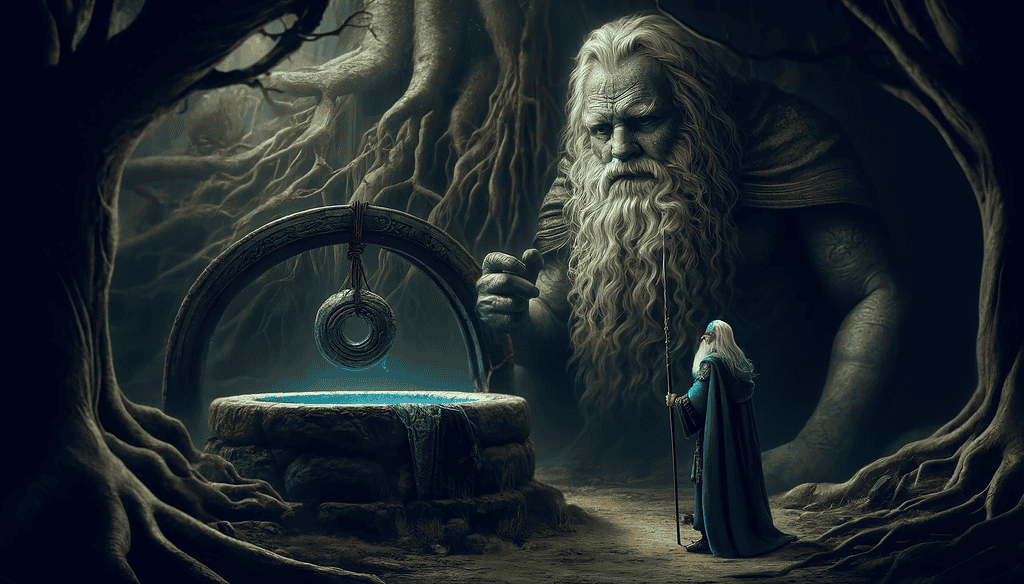
Exploring the Names of Odin
Odin, the enigmatic and pivotal figure in Norse mythology, is known by a myriad of names, each reflecting a different aspect of his complex character and divine functions.
These epithets paint a portrait of a god who is not only a leader but also a wanderer, a sage, and a warrior, embodying the varied traits that the Norse attributed to their deities.
This section delves into the significance of these names, exploring how each contributes to our understanding of Odin’s roles across the mythological narratives of the ancient Norse.
Allfather: The Patriarch of the Norse Gods
The epithet “Allfather” underscores Odin’s paramount position as the father of all gods within the Norse pantheon. This title reflects not only his authority but also his paternal role in fostering and guiding the divine and human worlds alike.
Through this name, Odin is seen as the foundational figure, a unifying force in the mythology that binds the cosmos’s various elements under his wise and watchful dominion.
Grimnir or Grimner: The Disguised God
The name “Grimnir,” translating to “masked” or “hooded,” reflects Odin’s strategic use of disguises to navigate the realms of gods and men. This epithet is prominently featured in the Poetic Edda, specifically in the poem “Grimnismal” (The Lay of Grimnir).
In this tale, Odin, disguised as Grimnir, visits King Geirrod. Subjected to torture to compel him to reveal his identity, Odin instead shares profound cosmic knowledge with Geirrod’s son, Agnar, who shows him kindness.
This story not only highlights Odin’s wisdom and resilience but also his ability to influence and instruct through his many guises, underlining the depth and complexity of his character in Norse mythology.
Jafnhar: Echoes of Wisdom
In the “Prose Edda,” specifically within the “Gylfaginning” section, the name “Jafnhar” represents a fascinating aspect of Odin’s manifold nature. Jafnhar, which means “Equally High,” is portrayed as one of three presiding figures, alongside Hárr and Thridi, seated in the hall of the mythical king Gylfi.
This triad, with Jafnhar as a pivotal figure, serves as a divine conduit for imparting esoteric knowledge about the cosmos and Norse mythology to Gylfi, who seeks this wisdom under the guise of Gangleri.
Through Jafnhar, Odin’s expansive wisdom is segmented and relayed, highlighting his role not just as a god of power but as a purveyor of profound knowledge.
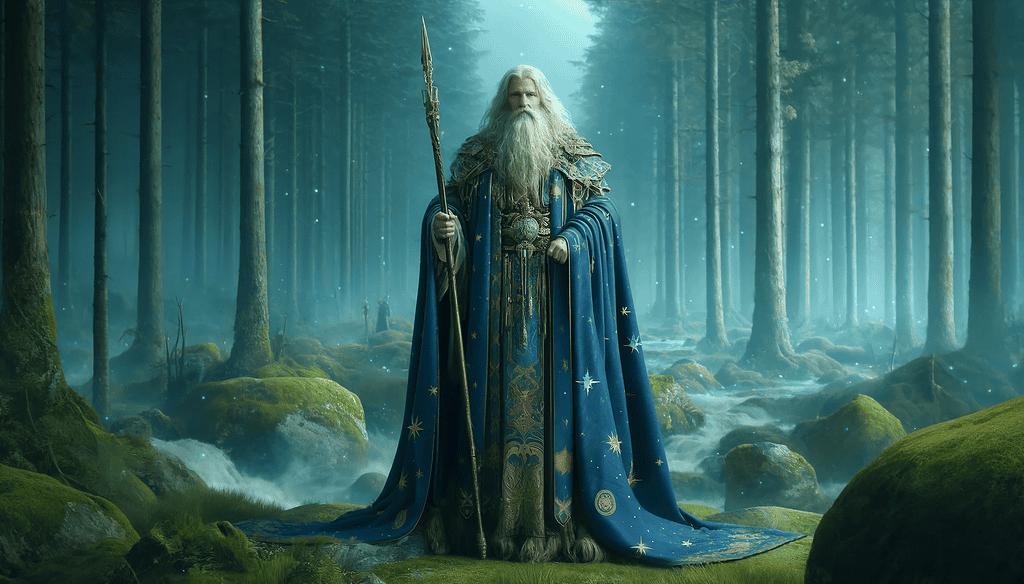
Baleyg: The All-Seeing Eye
In the rich tapestry of Norse mythology, the name “Baleyg,” which translates to “Flame-eye” or “Baleful-eye,” emerges from the Old Norse texts, notably the Poetic Edda and the Prose Edda.
This epithet of Odin encapsulates his ability to perceive all that transpires across the worlds, a trait symbolized by his penetrating and fiery gaze.
The moniker “Baleyg” vividly illustrates Odin’s profound wisdom and knowledge, as his eyes not only see but also understand the depths of reality, reflecting his omnipresent vigilance and insight. This name serves to remind us of Odin’s overarching presence and his unyielding pursuit of knowledge.
Bolverk: The Master of Deceit
In the Poetic Edda, particularly within the “Hávamál,” Odin adopts the guise of “Bolverk,” a name that translates to “Evil-doer” or “Worker of Misfortune.” This alias is central to a narrative where Odin, in pursuit of the coveted mead of poetry, resorts to cunning and deceptive tactics.
The moniker ‘Bolverk’ reflects Odin’s willingness to cross moral boundaries for the sake of wisdom and success, showcasing his multifaceted nature as a god who embodies not only wisdom and war but also the shadowy aspects of trickery and manipulation.
This story highlights the complexity of Odin’s character, revealing a deity who navigates through moral ambiguities to achieve his divine objectives.
Ganglere: The Weary Wanderer
In the “Prose Edda,” particularly in the section known as “Gylfaginning,” Odin adopts the name “Ganglere” as he assumes the guise of a weary traveler. This disguise allows him to engage in a revealing dialogue with King Gylfi.
Presenting himself as Gangleri, Odin facilitates a conversation that unwraps the expansive tapestry of Norse cosmology, mythology, and the roles of the gods.
This narrative technique not only drives the lore forward but also underscores Odin’s role as a seeker of knowledge and a teacher, willing to traverse great distances and assume humble forms to fulfill his quest for wisdom.
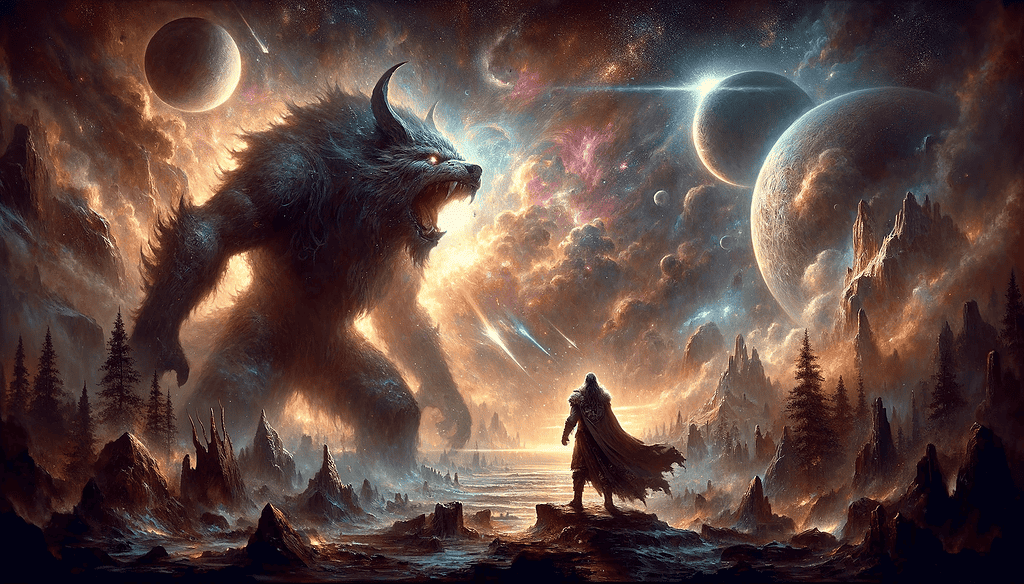
Hárbarðr: The Wise Old Challenger
In the Poetic Edda, particularly in the poem “Hárbarðsljóð” (The Lay of Hárbarðr), Odin adopts the guise of Hárbarðr, which translates to “Greybeard.”
This name signifies his appearance as an old, wise man, a guise under which he confronts Thor in a spirited flyting—a contest filled with exchanges of insults and wits. This narrative showcases Odin’s penchant for adopting various personas to engage with other gods in ways that test their character and intellect.
As Hárbarðr, Odin not only challenges Thor but also demonstrates his strategic use of knowledge and speech, embodying the cunning and depth that define his complex personality in Norse mythology.
Hjarrandi: The Echoing God
In the “Prose Edda,” the name “Hjarrandi” is attributed to Odin, though its explicit meaning isn’t directly defined in the text. Analyzing from the Old Norse elements, “Hjarrandi” likely stems from “hjara,” a verb that means to make a noise or resound.
This interpretation paints Odin as an echoing god, whose voice and influence reverberate across realms. As a deity of poetry, wisdom, and war, Odin’s pronouncements are pivotal, carrying weight that influences the cosmos and dictates the fates of gods and men alike.
This name highlights Odin’s role as a profound communicator, whose words and wisdom echo through time and myth.
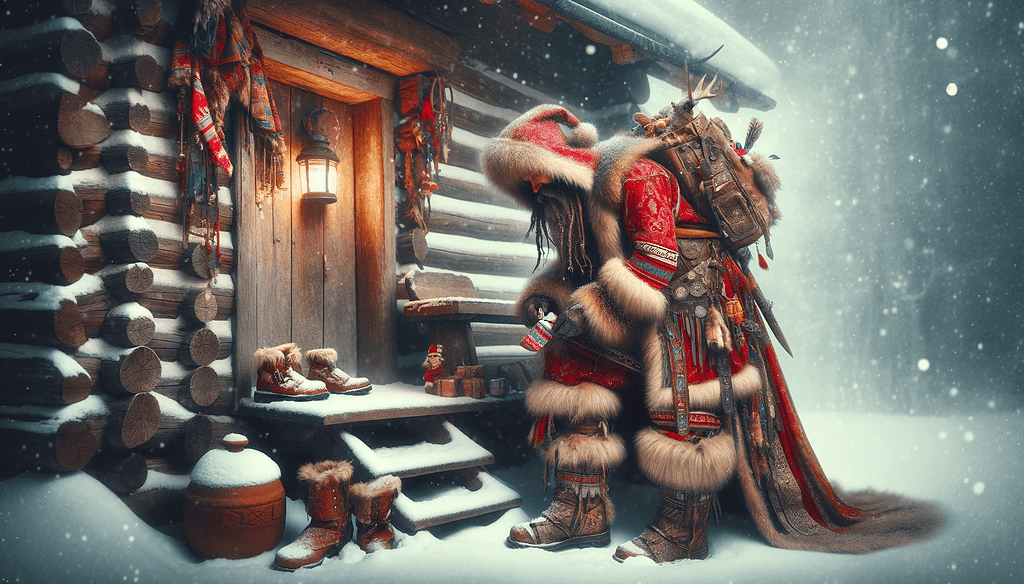
Jólnir: The Yule God
The name “Jólnir,” which emerges in the rich tapestry of skaldic poetry, is one of the many epithets ascribed to Odin. Skaldic poetry, celebrated for its complex and layered verses, often weaves in the names of gods to enrich the narrative and symbolic depth.
“Jólnir,” specifically linked to the Yule season, underscores Odin’s integral role during this significant time in the Norse calendar. This name highlights his influence over the winter festivities, a period laden with mythological importance and cultural celebration.
It reflects the reverence with which Odin was regarded during Yule, a season that encapsulates renewal, death, and rebirth within Norse tradition.
Óðinn: The Quintessence of Fury and Inspiration
“Óðinn,” the most widely recognized name for the Norse god Odin, roots deeply in Old Norse, akin to Old English “Wōden” and Old High German “Wuotan” or “Wodan.”
This name derives from “óðr,” meaning “fury,” “madness,” or “poetry,” reflecting Odin’s dual dominion over the frenzied states of warriors in battle and the sublime realms of poetry and wisdom.
This connection paints Odin not merely as a deity of war but as the patron of ecstatic, inspired states, encompassing a broad spectrum that includes shamanism, magic, and the guidance of souls.
The name “Óðinn” encapsulates the profound complexity and multifaceted nature of this god, highlighting his influential role across various facets of life and spirituality in Norse culture.
Ygg: The Terrible One
In the Poetic Edda, particularly in the poem “Hávamál,” the name “Ygg” surfaces as a crucial part of the compound “Yggdrasil,” referring to the all-encompassing world tree, a pivotal cosmic entity in Norse mythology. Derived from “Yggr,” which translates to “The Terrible One,” this name highlights Odin’s formidable aspects as a god of war and death.
The connection between Odin and Yggdrasil under the name “Ygg” emphasizes his integral role in maintaining the balance and connection between the various realms of existence, underscoring his fearsome and profound influence over the cosmos and its inhabitants.
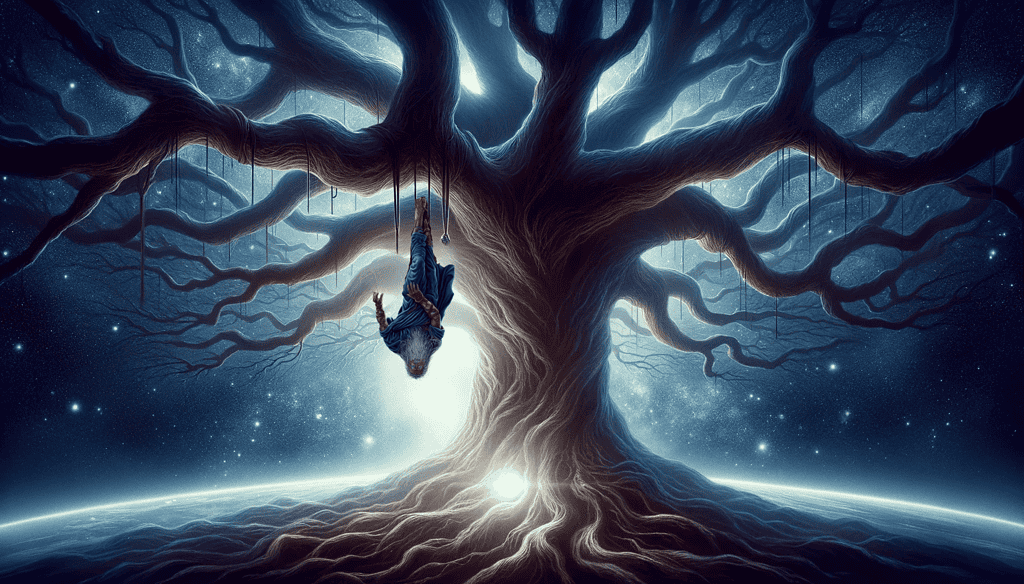
The Lay of Grimnir (Grímnismál)
“Grim is my name
And Ganglere,
Herjan and Helmet−bearer, Thekk and Thride,
Thud and Ud,
Helblinde and Har,Sad and Svipal,
And Sanngetal, Herteit and Hnikar, Bileyg and Baleyg, Bolverk, Fjolner, Grim and Grimner, Glapsvid and Fjolsvid,Sidhot, Sidskeg, Sigfather, Hnikud, Alfather, Valfather, Atrid and Farmatyr.
With one name
Was I never named
When I fared ‘mong the peoples.Grimner they called me Here at Geirrod’s,
But Jalk at Asmund’s,
And Kjalar the time
When sleds (kjalka) I drew, And Thror at the Thing, Vidur on the battle−field, Oske and Ome,Jafnhar and Bilflinde,
Gondler and Harbard ‘mong the gods.Svidur and Svidre
Hight I at Sokmimer’s,
And fooled the ancient giant When I alone Midvitne’s, The mighty son’s,
Bane had become.Odin I now am called,
Ygg was my name before, Before that I hight Thund, Vak and Skilfing,
Vafud and Hroptatyr,
Got and Jalk ‘mong the gods, Ofner and Svafner.
All these names, I trow, Have to me alone been given.”
The poem begins with a dialogue between Odin and his wife, Frigg, discussing two mortal kings, Geirrod and Agnar, who are brothers. Frigg accuses Geirrod of being inhospitable and miserly. To prove her wrong, Odin, disguised as a man named Grimnir, visits Geirrod.
However, Frigg has secretly warned Geirrod that a sorcerer disguised as a traveler will come to bewitch him. Consequently, when Grimnir arrives, Geirrod has him tortured to make him speak, by placing him between two fires for eight nights.
Throughout his ordeal, Grimnir remains silent, only speaking when Geirrod’s son, also named Agnar (after Geirrod’s brother), brings him a horn of ale. Only then does Grimnir begin to reveal his wisdom.
He speaks at length about the cosmology of the Norse world, describing the halls of various gods and the different mythical locations that constitute the universe. He also mentions numerous details about the roles and attributes of various gods.
Grimnir provides an extensive amount of knowledge about the runes, the fate of the world, and other secrets known only to a few. Importantly, throughout the poem, Grimnir/Odin names many of his own attributes and roles, showcasing the complexity and multiplicity of his divine persona.
The poem ends with Odin revealing his true identity to Agnar after predicting Geirrod’s imminent death. Startled by this revelation and fearing for his life, Geirrod attempts to kill Grimnir to stop any further prophecy. In his haste, Geirrod stumbles, falls on his own sword, and kills himself.
Odin’s last words to Agnar are a mix of blessing and prophecy, ensuring that Agnar will grow to be greater and wiser than his father, equipped with the deep knowledge Odin has shared.
Grímnismál is a rich source of Norse mythology, providing insight into the worldview of the ancient Norse, the nature of the gods, and the intricacies of their cosmological beliefs.
It also delves into themes of wisdom, power, the consequences of actions, and the importance of understanding one’s visitors and guests.
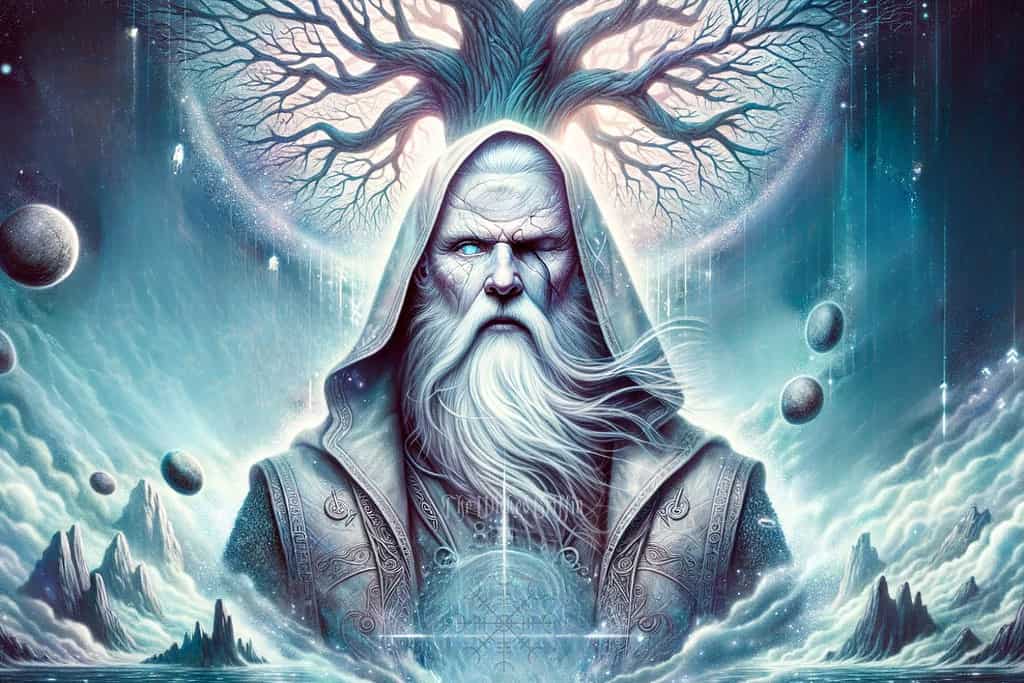
Is Odin Just Another Name for Wotan?
The names Odin and Wotan represent the same deity, yet they reflect regional variations in the worship and mythology surrounding this major Norse god. “Odin” is the name more commonly used in Old Norse texts, predominantly found in the Scandinavian regions.
On the other hand, “Wotan,” deriving from Old High German, is the name used among the Germanic tribes of the Continental Europe.
The reason why Odin is used in Scandinavia and Wotan is used in Continental Europe lies in the way the Germanic languages evolved from their common Proto-Germanic ancestor, particularly the split into a distinct linguistic North Germanic branch and eventually Old Norse, and from Proto-Germanic into a West Germanic language family, which also included Old High German.
Research suggests that Odin is a younger version whereas Wotan is the older one. In addition to that, both Wotan and Odin may have evolved into the mythological leading role from a sun-cult that dates back to the Iron Age (Lassen, 2011).
The word Wotan derives from a Proto-Germanic term called Wōdaz which means to rage, to be in a state of excitement or fury. In modern High German even today the term for anger or rage is ‘Wut’ which traces its linguistic lineage back to the same origin as Wotan.
These differences in naming are indicative of the widespread influence and adaptation of Odin’s character across different cultures within the Germanic world.
Although the names differ, they refer to a deity with similar attributes, roles, and importance within the pantheons of Norse and Germanic mythology. The variation highlights the rich tapestry of cultural exchange and linguistic evolution among the ancient Germanic peoples.
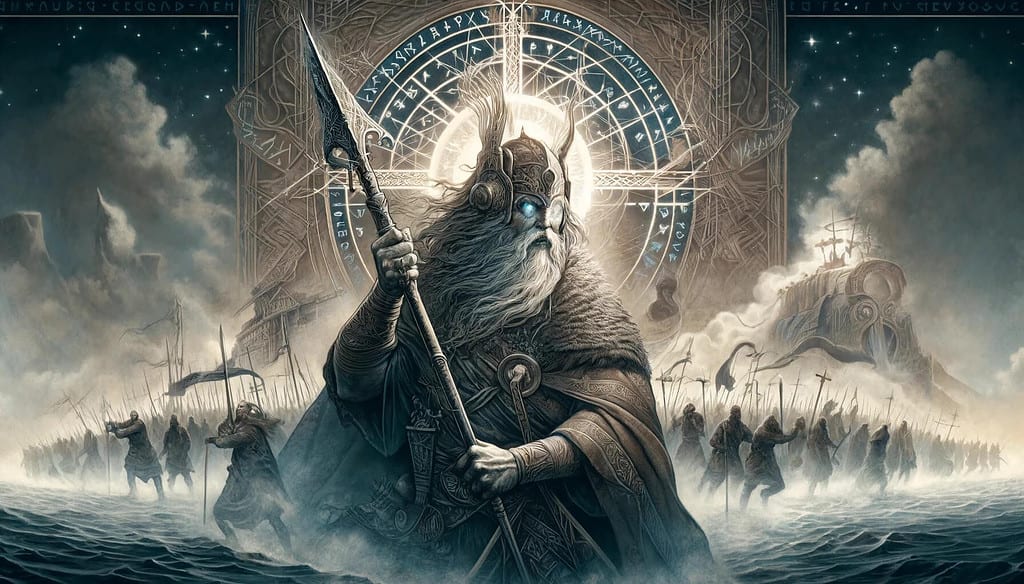
Reflecting on Odin’s Many Names
Our journey through the many names of Odin reveals a deity of profound complexity and multifaceted nature, each name offering a window into the values, beliefs, and practices of the Norse world.
These epithets, ranging from “Allfather” to “Ygg,” not only depict his diverse roles but also highlight his influence across various aspects of life and the cosmos. This exploration encourages a deeper appreciation for the rich tapestry of Norse mythology, where names carry weight and meaning, bridging the divine with the daily lives of the Norse people.
As we reflect on this intricate mosaic of names, we gain a greater understanding of how deeply integrated Odin was within the cultural and spiritual life of the Norse.
